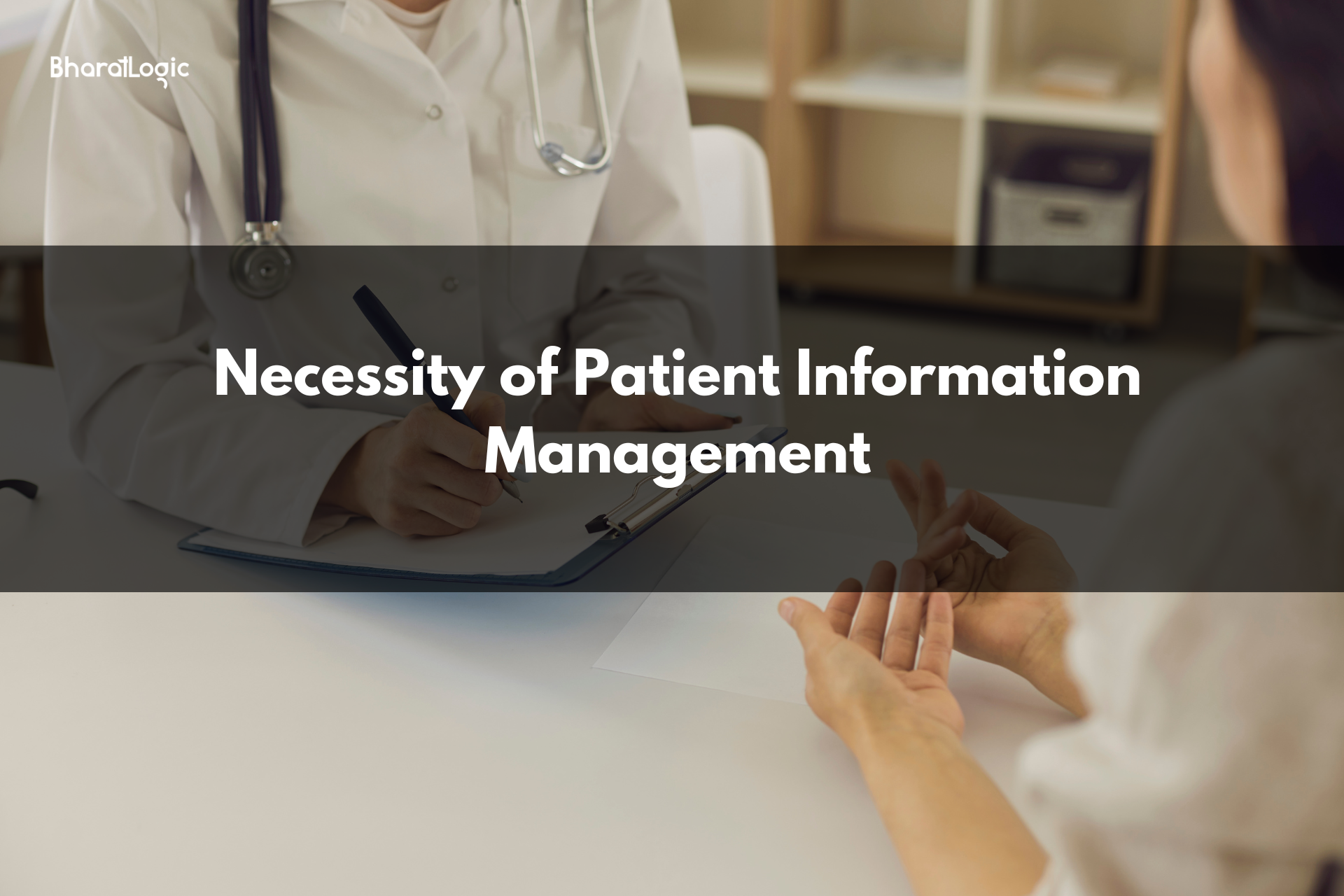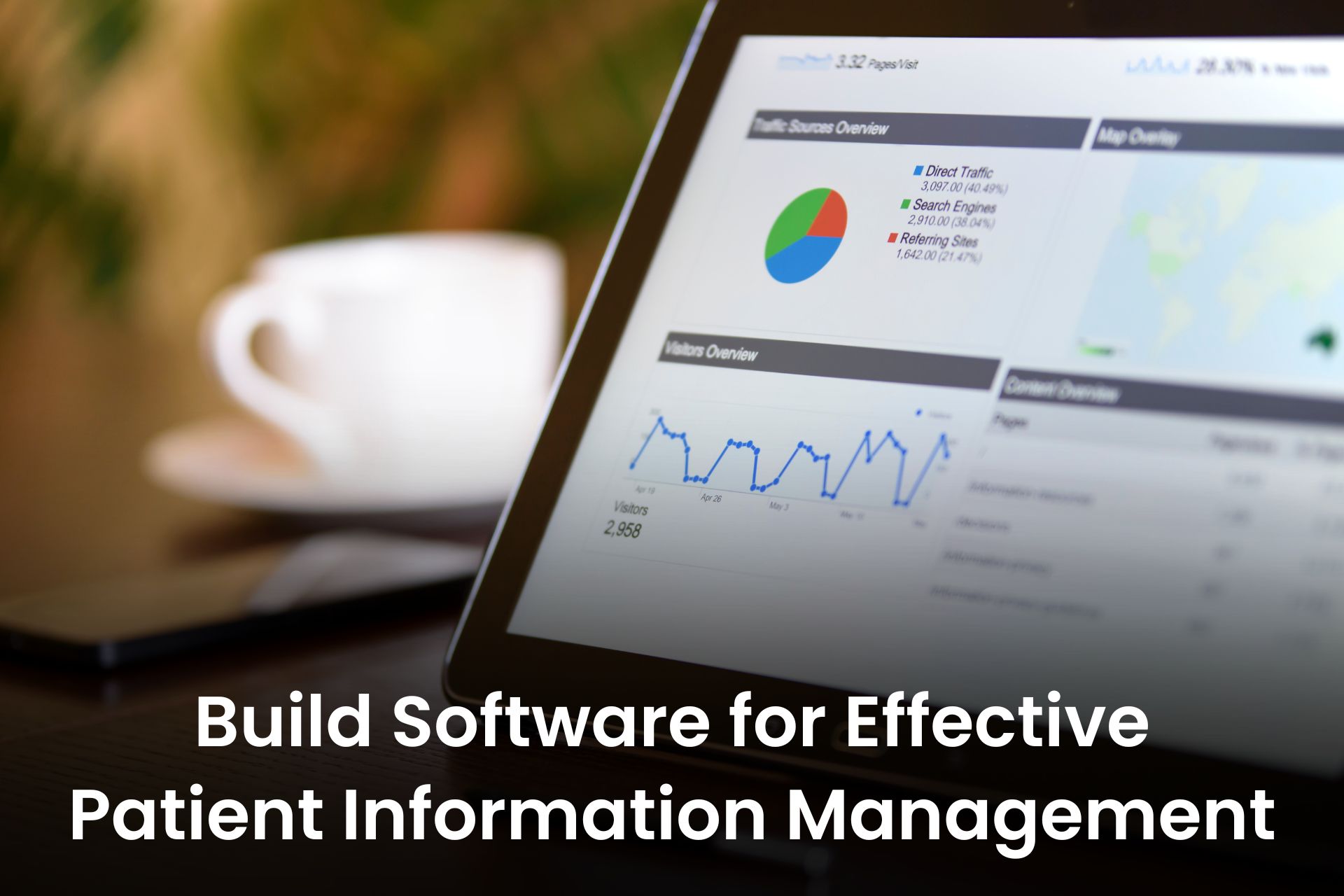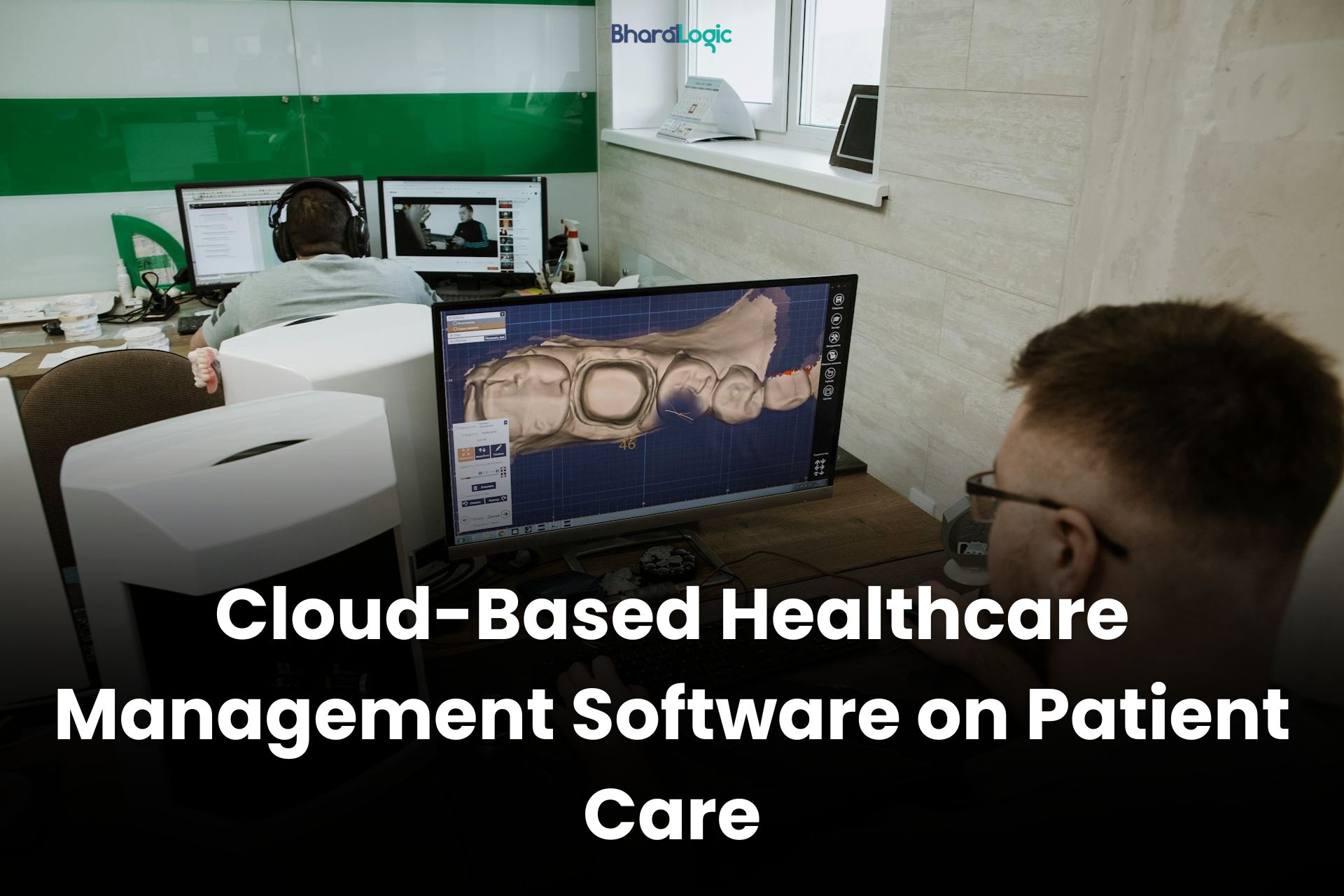How to Build Software for Effective Patient Information Management
With the widespread adoption of electronic health records (EHR) and patient management systems, healthcare providers are continually seeking innovative solutions to streamline their operations and enhance patient care.
This blog provides a comprehensive guide on how to build software for effective patient information management, helping you create a solution that meets the needs of both healthcare professionals and patients.
Understanding the Necessity of Patient Information Management

it’s essential to understand why effective patient information management is crucial. With an increasing volume of patient data resulting from advancements in medical technology and practices, healthcare professionals face the challenge of organizing and analyzing this information. Effective patient information management enhances:
- Patient Care: Accurate and easily accessible patient information leads to better diagnosis and treatment options.
- Operational Efficiency: Streamlined processes minimize administrative burdens, allowing healthcare providers to focus on patient care.
- Regulatory Compliance: Adherence to HIPAA and other regulations is vital for protecting patient information.
- Patient Engagement: Empowering patients to access their health records encourages active participation in their care.
Identifying Key Features for Your Software

When developing software for patient information management, key features must be prioritized to ensure it meets the needs of healthcare providers and patients. Here are essential features to consider:
1. User-Friendly Interface
Developing a user-friendly interface is critical for enabling healthcare providers and patients to navigate the software easily. Consider implementing intuitive design principles, including:
- Simple Navigation: Ensure that users can quickly find the information they need.
- Responsive Design: Optimize the interface for various devices, including tablets and smartphones.
- Customization Options: Allow users to tailor the interface to their preferences.
2. Secure Data Storage and Access
Patient information is highly sensitive, making data security a top priority. Implement robust security measures such as:
- Encryption: Use advanced encryption techniques for data at rest and in transit.
- Access Controls: Design role-based access controls to restrict sensitive data to authorized users only.
- Auditing Capabilities: Enable audit trails to track who accessed patient information and when.
3. Interoperability
Your software should be capable of integrating with existing systems, such as EHRs, laboratory systems, and billing software, to allow seamless data exchange. This interoperability is critical for providing a comprehensive view of a patient’s health history.
4. Patient Portal
Including a patient portal empowers patients to access their health information, schedule appointments, and communicate with healthcare providers. Key features for a patient portal might include:
- Secure Messaging: Facilitate communication between patients and providers.
- Appointment Scheduling: Enable patients to book and manage appointments online.
- Access to Health Records: Provide easy access to lab results, treatment history, and prescribed medications.
5. Reporting and Analytics
Implementing robust reporting and analytics features can help healthcare providers track patient outcomes, manage population health, and enhance decision-making. These features may include:
- Customizable Reports: Allow users to generate reports tailored to their specific needs.
- Data Visualization: Use charts and graphs to present data in an easily digestible format.
- Predictive Analytics: Incorporate machine learning algorithms to anticipate patient needs and trends.
Selecting the Right Technology Stack

Choosing the right technology stack is crucial for the successful development of your software. Key components to consider include:
1. Programming Language
Select a programming language that is suited for healthcare applications. Common choices include:
- Java: Known for its reliability and security, Java is often used in large-scale applications.
- Python: With its simplicity and versatility, Python is emerging as a favorite for developing analytics-driven solutions.
- JavaScript: Ideal for creating interactive user interfaces and web applications.
2. Database Management System
Choose a robust database management system that can handle large volumes of data while ensuring optimal performance. Some popular options include:
- MySQL: An open-source relational database known for reliability.
- PostgreSQL: Offers advanced functionality and supports various data types.
- NoSQL Databases: Consider NoSQL options like MongoDB for handling unstructured data.
3. Cloud Infrastructure
Utilizing cloud infrastructure enables flexibility, scalability, and cost efficiency. Popular cloud service providers include:
- Amazon Web Services (AWS): Offers a range of services tailored for healthcare applications.
- Microsoft Azure: Provides HIPAA-compliant solutions suitable for storing and managing patient data.
- Google Cloud Platform: Known for its machine learning capabilities, which can enhance analytical features.
Ensuring Compliance with Regulations

When building software for patient information management, adherence to regulations such as HIPAA (Health Insurance Portability and Accountability Act) is essential. Compliance involves:
- Data Protection: Implement technical safeguards to protect patient data.
- Training Staff: Educate team members on compliance policies and procedures.
- Regular Audits: Conduct periodic audits to identify potential vulnerabilities and ensure adherence to regulations.
Testing and Iteration
Once the software has been developed, rigorous testing and iteration are key to ensuring its effectiveness. Consider the following approaches:
1. User Acceptance Testing (UAT)
Engage healthcare providers and patients to test the software in real-world scenarios and gather feedback. This process helps identify usability issues and areas for improvement.
2. Performance Testing
Conduct performance testing to ensure the software can handle peak loads without compromising speed or functionality.
3. Continuous Improvement
Adopt an agile development approach that encourages continuous feedback and iterative improvements. Regular updates will keep the software aligned with changing regulations and user needs.
Training and Support

After the software is deployed, offering comprehensive training and ongoing support is crucial for adoption. Provide:
- Training Sessions: Organize hands-on training sessions for users.
- User Manuals: Create detailed documentation to assist users in navigating the software.
- Technical Support: Establish a responsive support team to address user concerns.
Conclusion
Building software for effective patient information management system is a complex yet rewarding endeavor that contributes significantly to enhancing healthcare delivery.
By prioritizing user-friendly design, robust security, and interoperability, you can create a solution that empowers healthcare providers and patients alike. To maximize your potential in this field, consider partnering with Bharatlogic, a premier software development company specializing in native and cross-platform solutions. Our expert team will work closely with you to create a customized software solution that perfectly aligns with your unique needs. Trust in our proven track record of success and let us help you achieve your goals with efficient and effective technology solutions. Remember, the landscape of healthcare is ever-evolving, so maintaining flexibility and a commitment to continuous improvement will ensure your software remains effective in managing patient information for years to come. Contact us today to learn more about how we can support your upcoming projects.
FAQs
Developers must comply with regulations such as:
- Health Insurance Portability and Accountability Act (HIPAA) in the U.S. for patient privacy and data protection.
- General Data Protection Regulation (GDPR) in the EU for handling personal data.
- Other local health regulations, depending on the market where the software will be deployed.
To ensure data security, consider implementing:
- Encryption for data both in transit and at rest.
- Regular security audits and penetration testing.
- Role-based access control (RBAC) to limit who can view or edit sensitive information.
- Two-factor authentication (2FA) for added security.
User testing should involve:
- Recruiting healthcare professionals who will use the software to participate in testing.
- Creating use-case scenarios that mimic real-world applications of the software.
- Collecting feedback on usability and functionality to make necessary improvements before the final launch.
Common challenges include:
- Integrating with existing systems and ensuring data compatibility.
- Maintaining compliance with health regulations and standards.
- User adoption: Ensuring healthcare staff are trained and comfortable using the new software.
- Managing updates and maintenance to keep the software secure and efficient.
Promotion strategies can include:
- Targeted marketing campaigns aimed at healthcare providers.
- Engaging with industry conferences and events to showcase the software.
- Offering free trials or demos to encourage user engagement.
- Building partnerships with healthcare organizations and influencers to expand reach.




